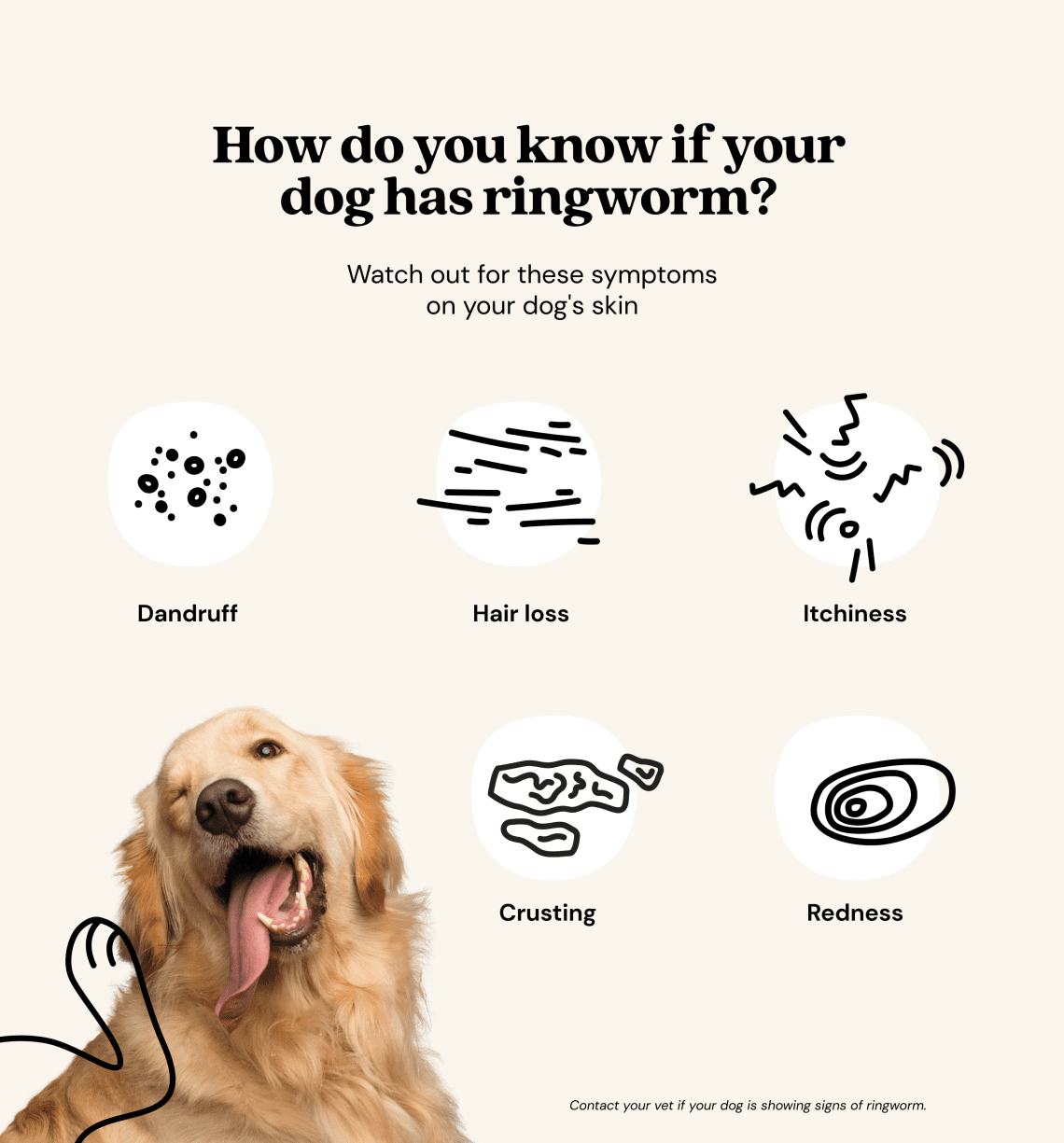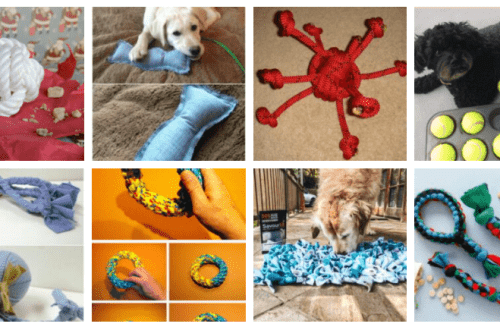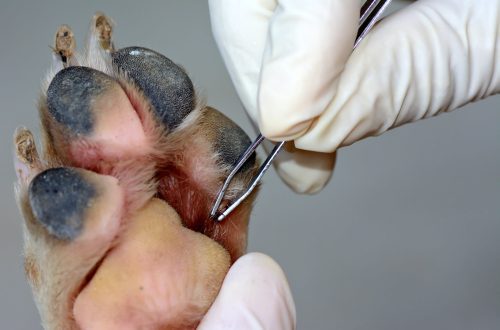
Ringworm in Dogs: Symptoms, Treatment, and Prevention
Red ring-shaped skin lesions are the main and most recognizable sign of ringworm in both dogs and humans. However, ringworm in dogs is not always manifested by foci that resemble rings. It is a very common and contagious skin infection in dogs.
It is characterized by skin lesions that usually appear on the muzzle, ears, tail, or paws. While these affected areas are fairly easy to spot, ringworm can spread to other, more hidden areas on your pet’s body. This significantly speeds up its distribution.
However, despite the fact that ringworm in dogs is a very unpleasant phenomenon, it is easy to prevent and quite simple to cure.
Contents
Ringworm in dogs: infection
Pets often become infected with ringworm, or dermatophytosis, while digging. This disease is relatively easy to treat and does not cause serious complications. However, dermatophytosis in dogs can be difficult to manage due to the fact that it is highly contagious and can be transmitted via fomites.
Fomite is any object or material contaminated with a pathogen, upon contact with which the infection is transmitted. In short, everything a pet touches can be infected with ringworm. This poses a risk of transmission to other dogs, cats and people. If a four-legged friend is suspected of having ringworm, disinfect any brushes, beds, food and water bowls, and toys. In general, everything that the pet comes into contact with.
In addition, any infected dog is considered highly contagious to other animals and humans. Gloves should be worn or hands should be washed and clothing should be washed after contact with the dog. She also needs to be kept in quarantine until the veterinarian reports that she is cured.
Ringworm: breeds that can get infected
Not all dogs that come into contact with animals infected with ringworm show signs of the disease. Infections depend on the type of fungus, as well as the pet’s age, relative health, nutrition, and care.
Ringworm can develop in any dog, but certain age groups and breeds are more at risk. In an article for DVM360, veterinary dermatologist Antea Schick writes that Boston Terriers, Yorkies and Jack Russell Terriers are more prone to ringworm infections. She adds that very old dogs, puppies, and dogs with suppressed immune systems are also at increased risk of developing ringworm.
Ringworm in dogs is transmitted to humans. If a pet has been diagnosed or suspected of having dermatophytosis, do not touch its skin. Hands must be washed after each contact with the dog. If red spots appear on the skin of the owner, he should immediately consult a doctor.
Ringworm in a dog: treatment
Veterinarians usually diagnose ringworm with a physical examination and one or more simple laboratory tests. Wood’s lamp, fungal culture, and microscopic examination of wool are the most common ways to diagnose this infection. Sometimes dermatophytosis in dogs is determined using a skin biopsy or polymerase chain reaction (PCR) analysis, with samples sent to a specialized laboratory.
Ringworm is treated with antifungal, topical, oral medications, or a combination. In addition, pharmacies offer several types of lotions, creams and shampoos, which can be purchased with a prescription from a veterinarian. Ringworm can also be treated with prescription-only oral antifungal medications.
Pets often shave the area of infection to prevent the spread of the disease through the falling out infected hair. In some cases, a dog can become re-infected with ringworm. However, in such cases, treatment can speed up recovery and reduce the likelihood of transmitting the disease to other animals or people.

How to disinfect your home
Ringworm likes to migrate and infect others through fomites, so home disinfection is a critical part of any treatment. If your dog has ringworm, veterinarians recommend taking the following steps:
- Keep your dog in a separate area that is easy to clean. If there is carpet, you need to vacuum it daily.
- Use a 1:10 diluted bleach with water or an all-purpose cleaner on all non-porous surfaces twice a week, such as countertops, etc.
- Wipe all floors and walls with a dry cloth once a week.
- Wash all beds weekly at the highest temperature and discard any bedding or toys that are difficult to clean.
- After any contact with an infected dog, change clothes and send them to the washing machine as soon as possible.
In particularly severe cases, you can clean the air ducts and replace all air filters, especially if there are children or other dogs in the house.
Ringworm Prevention in Dogs
First of all, you should not allow the dog to dig out the holes of rodents, since this is how the infection is often transmitted. The chance of contracting ringworm can also be reduced by improving your pet’s overall health.
If you take your dog to the veterinarian for check-ups once or twice a year, follow all his recommendations and provide your pet with preventive nutrition, this will be the best protection against ringworm.





